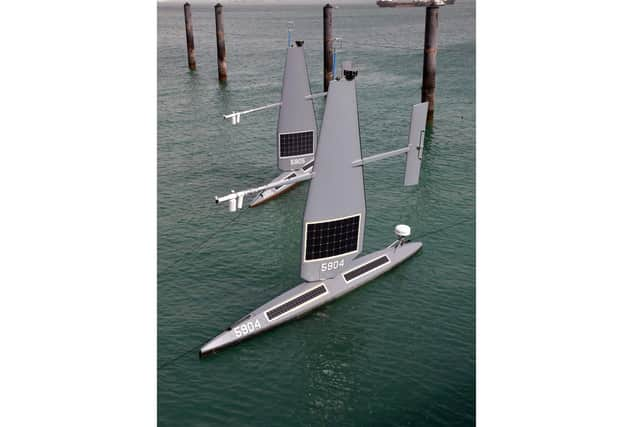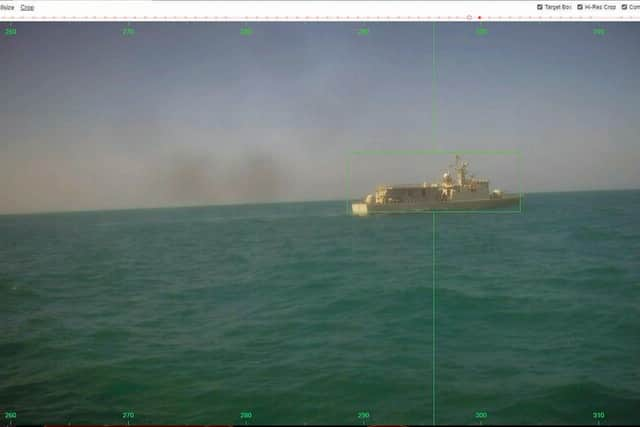Royal Navy: British-led taskforce in the Gulf test hi-tech drones that look like sailboards to protect billion-pound shipping lanes
This article contains affiliate links. We may earn a small commission on items purchased through this article, but that does not affect our editorial judgement.
and live on Freeview channel 276
The bizarre-looking pieces of tech are packed with a raft of cutting-edge sensors to monitor shipping activity in the Gulf and could soon be a permanent fixture in the Middle East.
They have been trialled in the approaches to Bahrain by the team running Operation Sentinel, a multinational task force led by Royal Navy Commodore Don Mackinnon.


Advertisement
Hide AdAdvertisement
Hide AdAnd they have already proven a success. Loaned from the US Navy, the drones were able to alert Sentinel HQ to an unidentified vessel approaching Bahrain.
Staff at the command centre were then able to scramble one of Operation Sentinel’s patrol ships - the Bahraini Al Muharraq, to intercept the vessel while the drone observed the entire situation remotely.
A spokesman for the Royal Navy said: ‘Once it had confirmed the vessel as a friendly merchant ship, and with no further action required, the Al Muharraq returned to its original patrol and the drones resumed their own silent vigil, without the need to refuel or replenish.
‘The trial proved that collectively, the drones and patrol vessel were able to patrol and monitor a far greater area of sea than an individual warship working on its own.’


Advertisement
Hide AdAdvertisement
Hide AdThe test was welcomed by Commodore Mackinnon, who added: ‘This exercise was a perfect demonstration of our progress towards delivering a genuinely “digital ocean”, one where navies increasingly employ a combination of manned and unmanned systems, on, above, and below the surface, which deliver unparalleled situational awareness and operational choice to the commander.’
Operation Sentinel is responsible for protecting merchant shipping passing through some of the region’s narrowest regions - like the Strait of Hormuz, gateway to the Gulf, and the Bab-al-Mandeb at the foot of the Red Sea - from attack.
Currently, the military operation uses a combination of small patrol vessels and larger warships to oversee Gulf activity and defend the billions of pounds of shipping that pass through the route.
Among the Royal Navy ships deployed to Bahrain include Portsmouth-based minehunters HMS Middleton and HMS Chiddingfold as well as the Type 23 frigate HMS Montrose, which is forward-deployed to the region.
Looking for the latest Royal Navy updates from Portsmouth? Join our new Royal Navy news Facebook group to keep up to date.
A message from the Editor, Mark Waldron
You can subscribe here for unlimited access to our online coverage, including Pompey, with 70 per cent fewer adverts for less than 20p a day.
Comment Guidelines
National World encourages reader discussion on our stories. User feedback, insights and back-and-forth exchanges add a rich layer of context to reporting. Please review our Community Guidelines before commenting.